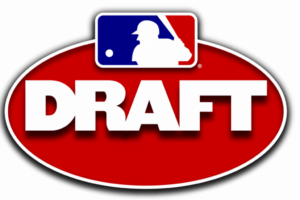How We Evaluate Prospects

Our content here at Future Sox can be divided into two categories: reporting and disseminating information, and analyzing that information to evaluate prospects. The former is easy enough to understand – we report on news related to the minor leaguers, recap games, publish interviews, and so on. The latter is an inexact science, and everyone has a different approach and perspective.
We get questions from readers and social media followers, asking how we have gone about evaluating this player or that pitcher. This article is going to give our readers a view into how our writers evaluate prospects in the White Sox system.
THE IN-PERSON VIEW
Any scout – affiliated professional, independent professional or amateur – will tell you that nothing can substitute for seeing a player live when it comes to evaluation. This is the only way to see the real scale of a player’s raw tools; things like bat speed, foot speed and quickness, arm strength, physical build and foot work. The purpose of minor league development is to hone those tools into baseball skills. To understand how a player might perform when (or if) they develop those skills at a high level, you have to see what they bring to the table.
Even at a more advanced level, seeing those skills in action is equally important. How reliably can a pitcher repeat their delivery? What is the quality of movement (direction, scale, early/late) on their pitches? Is a hitter getting power numbers by cheating on the load, or are they truly able to wait longer and be quicker with the bat? These are all examples of scenarios where statistical results may be “lying” in regards to how effective they may be against major leaguers in the future.
We get writers out to games in person as often as we can, and we’ve done it each of the past few seasons. In 2015 and 2016 we saw every affiliate plus Spring Training, extended training, Fall Instructs and the AFL, talked with scouts and front office personnel at the games, and took plenty of video (you can see all our prospect videos on our YouTube channel). These visits provide invaluable information, but the reality is we’re all doing this in addition to full time jobs, so we don’t get out there as often as we’d like. Which brings us to the next tool in our bag…
SECOND HAND SCOUTING INFORMATION
Because we only see 20 to perhaps 70 players a year in person (more often closer to that 20), and only see those typically once or twice in any given year, we need to seek out further eye witness reports wherever we can find them. We usually don’t get to see the team’s own internal scouting reports, but there are plenty of other places we can get those kind of reports. That includes written reports as well as videos.
National publications that do prospect scouting across baseball often have useful data, particularly on the higher end prospects, and we read their material religiously. We often reference them here on the blog as well (you will see us cite those sources if we present any of their findings). For the deeper or lesser well-known prospects, there are amateur scouts who we’ve developed relationships with that provide video and reports to work from. Not everyone who reports on players from Sox affiliates is reliable, but some have proven they are.
Occasionally, we get a chance to chat with a White Sox scout about players. This is more rare but when we have the chance, we leap at it. The same goes for affiliate front office staff. When we combine our own views with those from these other parties, we can typically get a pretty good picture of most of the true prospects in the system.
STATISTICS
You may see scouts of all stripes using the phrase “box score scouting” in a tone usually reserved for certain FCC-listed four letter words. This reflects the belief that simply looking at how a player performs statistically in the minors is not a good tool for prospect evaluation. And they’re right.
That however does not mean that stats in the minors are completely meaningless, and we do use them as part of our evaluation scheme. While their utility is limited by and under some specific circumstances, one can still glean useful information from them. The best way to determine what value, if any, they may have in looking for indications of future success, is to keep a few key points in mind.
- Utility of statistics is correlated with level of play: At the back end of the scale, numbers in the Dominican Summer League are borderline useless. Rookie leagues are only slightly better. As players reach AA and AAA though, legitimate prospects should start dominating their cohorts and busts usually have begun falling down by that point.
- Not all statistics are created equal: Looking at a player’s average, home runs and RBI’s as you would with a TV broadcast tells you very little. Any number significantly reliant on other players, such as runs & RBI for hitters and wins/losses for pitchers should be virtually ignored. Core numbers (AVG, OBP & SLG for hitters, ERA & WHIP for pitchers) are a little more meaningful but still quite limited. Peripheral values can be useful (K/PA & BB/PA for hitters, K/9 and BB/9 rates for pitchers). And finally, some advanced stats like Iso SLG, Iso OBP & LD% for hitters, GB/FB ratio and Swing-Miss rates for pitchers, can be helpful in determining current skill levels.
- Data pollution: These factors are much more prevalent in the minors than the majors. The frustrating and common “he’s working on something” factor is big here; for example a pitcher may be throwing nothing but fastballs for an entire start because he’s working on command and variants of that pitch that day. It can also be little things, like the fact that fields at lower levels don’t play as cleanly (adds deviation to metrics).
- Limited scope: Minor league statistics are much more limited in scope than in the majors. There simply isn’t as much base data to work from, so no matter how many ways you slice and dice it, there are significant limits to what is measured on the field.
- Sample size: The always-important sample size is only amplified in the minors. A few weeks’ performance in the minors is not a reliable indicator of, well, much of anything. Further complicating matters, by the time players to accumulate enough time at a level (say, a season) for the numbers to tell us anything, they may have already changed as a player and may have played across multiple levels.
That’s a lot of caveats, addendums and factors of mitigation (and there are more beyond that, as we’ll explore shortly). This is why you have to be very careful relying on stats for prospect evaluation. But these factors do not render all stats in all cases useless.
NON-STATISTICAL HARD DATA
Some of the most important factors in determining how a prospect is actually progressing, oddly enough, can be found right at the top of their profile on your favorite stat site. You’ll hear us discuss age versus level quite often. For example, let’s say a pair of outfielders playing at the same level putting up nearly identical stats. They may even have very similar raw physical tools. But if one is 19 and the other is 23, that’s a huge difference. A 19 year old has, at best, a year or two of professional development time under his belt and no college ball. The 23 year old should be more advanced at that point in time.
Further on the topic of age, there are two ways to look at it. One is pure calendar age, which is what is usually referenced. But another aspect is what might be called developmental age. How many years of pro and/or college experience does the player have? An outlier example might be Eddy Alvarez, who put up big numbers in rookie and A ball, but was 23 years old when doing it, which would normally tell us his performance wasn’t all that spectacular. But when you realize this was his first season of pro ball, and that he had just a year of community college play previously (this due to his time as an Olympic speed skater), it becomes more impressive.
Something else you’ll find in a players “bio” is his draft pedigree. If a player is taken in the first few rounds of the draft, this derivative data point tells you the team(s) scouting him saw a lot to like. So even without their scouting reports, you have a pretty good idea of how they saw his future prospects.
Along with this data is the player’s bonus – this has become an even more critical piece of the puzzle with the current draft rules. A team may (and often does) draft a player in the 6th round, but pay him 20th round money. This tells us they liked him, but also drafted him at that level as a “signability” pick, to leave room under the bonus limit for signing other players. On the flip side, a team may draft a guy in the 20th round and pay him 8th round money, which indicates he’s an “over slot” guy that they knew was a risk not to sign at all, but was worth a shot.
For players from non-draft markets like Latin America, instead of draft pedigree we look at bonus level and age at signing time.
INTERVIEWS
Intangibles. Mental approach. Baseball IQ. Anyone who has worked professionally in baseball will tell you that what is going on in a prospect’s head will ultimately have some effect on their potential MLB future. The problem is, such qualities are nearly impossible to quantify. Thus you’ll see many scouting types not go into this topic at all, or even be actively and loudly dismissive of it.
We take a different approach here. While we wouldn’t be so ignorant or arrogant as to think we can fully evaluate a player’s mental readiness, that should not stop us from trying this path. So, we interview prospects – a lot of them. We’ve spoken directly with some 40+ White Sox prospects in the past two seasons (as well as a handful of managers and coaches). Much of what we get is just entertaining or fun, but occasionally we get interesting nuggets of information that no scouting report would ever supply. And the players’ answers to questions can sometimes help add color to the grayscale picture painted by more typical scouting data.
OTHER DETECTIVE WORK
Determining a prospect’s future potential using any or all of the methods above has a common flaw that cannot be easily overcome – they all assume equal opportunity. In reality, team front offices have opinions and biases as to which players they “like” best. Even if those opinions are not shared by other evaluators, two realities must be taken from this: that the team sees more of that player than anyone else, and that the team will give players more opportunities the more they like their future chances.
As such, it is important to listen to what the club says and does, even if their moves seem counterintuitive. Someone like Buddy Bell or Nick Capra talking up specific Sox players means they either see more value in them than others might, or that they want to increase the player’s profile for one of a number of reasons. No matter the motivation, this is a signal that the player(s) being discussed will get more and better opportunities than others. And that translates to increased chances of said players reaching the majors, all else equal.
Another type of signal is how the players are handled in the minors, in terms of affiliate assignments and even lineup position. If a player is promoted despite reports he doesn’t appear ready, the team wants to challenge him. If a player is constantly at the bottom of the batting order, they probably don’t care as much about getting the player more development. Are these signals absolute or fully reliable? No, but they add to the overall picture and are therefore worth monitoring.
THE FULL PICTURE
In-person views, professional scouting reports, videos, stats, age, draft/sign pedigree, mental approach, club-granted opportunity; all these are factors in our evaluation of prospects in the White Sox system. Ideally we get information of all these types, but sometimes we have only some of them to work from.
Future Sox has eight writers, and our twice-annual rankings are done as a group of usually five or six of them discussing and voting on the players. So just as having more data points to work with is good, having more than a single person involved in evaluation helps trim the edges and moderate outliers.
Prospect evaluation is, of course, highly subjective and fraught with imprecision. To quote a phrase oft-used by Baseball Prospectus, prospects will break your heart. Make no mistake, we want every player in the organization to succeed and reach the majors. But most won’t, and that’s OK. We love writing about them, and want our readers to know how we go about the sticky business of evaluating and ranking the potential future stars of the Chicago White Sox.






